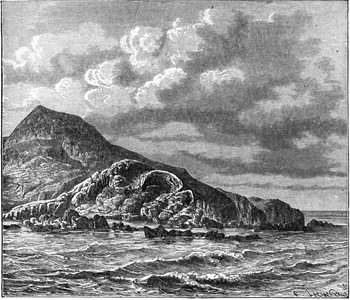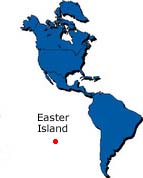Easter Island: Land of Giant Stones and Mysteries
Part 1: The Island In the Pacific Ocean, thousands of miles away from the nearest population center, lies Easter Island, a strange and mysterious place famous for what happened there many years before and what kind of evidence has been left behind.
Since that time, scholars have asked two important questions about Easter Island: 1) How did the people get there? Were they always there, or did they come from somewhere else? 2) How did they build such massive rocks and transport them from the quarries where they were built to the clifftops where they were ultimately found?
As for the moai, these 13-foot-tall, 14-ton stone carvings present an entirely different kind of mystery. Historians think that the inhabitants of Easter Island built and transported the giant stone carvings between 1400 and 1600 A.D. But how did they do it? And why did they do it? Next page > Some Answers > Page 1, 2 |
|
Social Studies for Kids
copyright 2002–2026
David White



 The
island, called Rapa Nui in the local language, got
its English-language name from Holland's Captain Jacob
Roggeveen, who landed there on Easter Sunday in 1722.
Roggeveen found a strange culture and even stranger huge
structures called Moai, face-like giant rocks that
dotted the coastlines, as if guarding the island's people
from intruders.
The
island, called Rapa Nui in the local language, got
its English-language name from Holland's Captain Jacob
Roggeveen, who landed there on Easter Sunday in 1722.
Roggeveen found a strange culture and even stranger huge
structures called Moai, face-like giant rocks that
dotted the coastlines, as if guarding the island's people
from intruders.
 Historians
still can't agree on where the island's original people came
from, although most people think that they came from
somewhere else. Did they sail from Chile, thousands of miles
to the east? Did they sail from Hawaii or a Polynesian
island, thousands of miles to the west or northwest? No one
really knows for sure, although many people have evidence
for their theories, including similarities to both Chilean
and Polynesian cultures.
Historians
still can't agree on where the island's original people came
from, although most people think that they came from
somewhere else. Did they sail from Chile, thousands of miles
to the east? Did they sail from Hawaii or a Polynesian
island, thousands of miles to the west or northwest? No one
really knows for sure, although many people have evidence
for their theories, including similarities to both Chilean
and Polynesian cultures.

